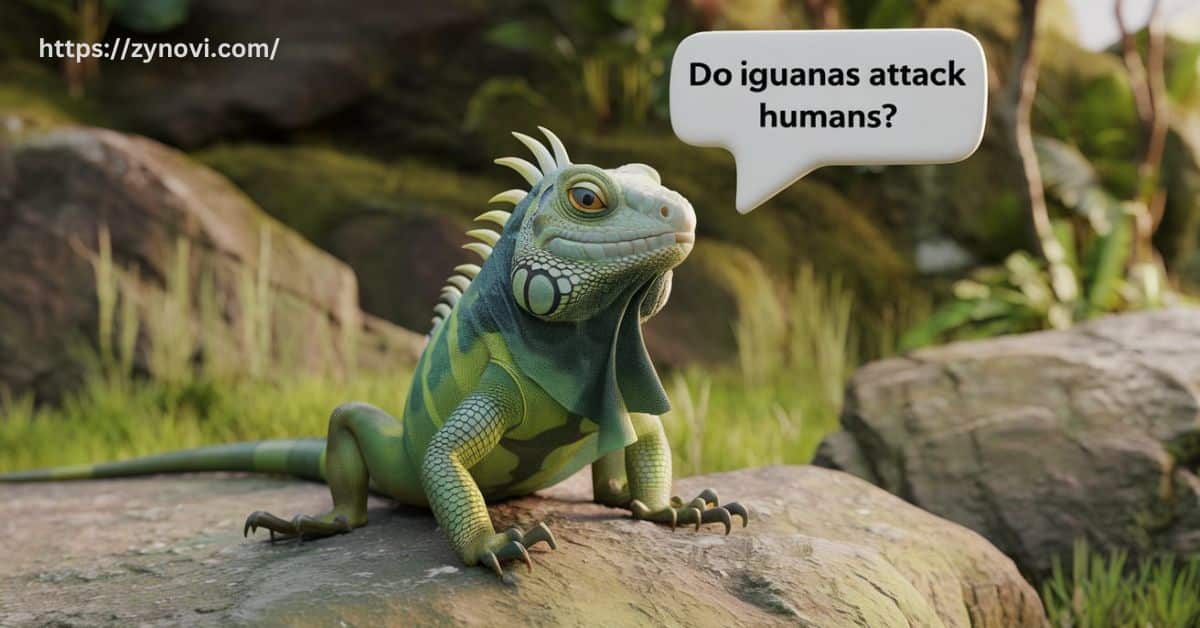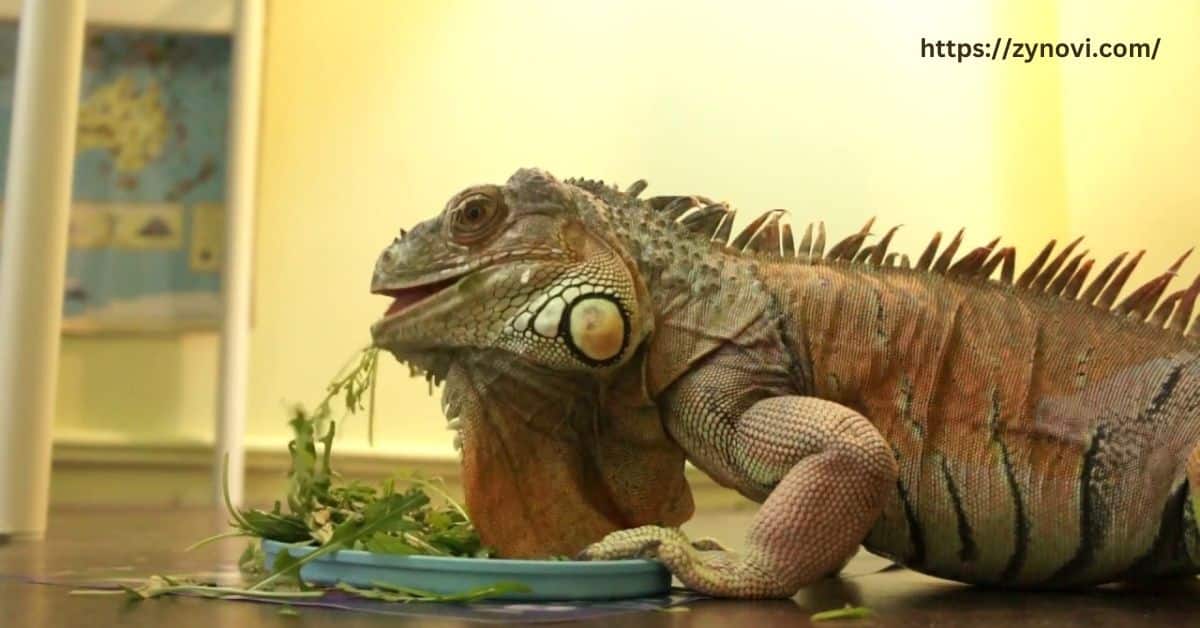Do Iguanas Attack Humans? Iguanas rarely attack humans, but they may bite or exhibit aggressive behavior if they feel threatened or cornered.
You’ve probably heard about iguanas being intimidating creatures, but are they really a threat to us? Whether you’re planning to meet one in the wild or already have one as a pet, it’s natural to wonder about their behavior and how to stay safe.
Iguanas are fascinating reptiles, but their defense mechanisms can be a bit startling if you’re not prepared. In this article, we’ll jump into the truth behind iguana attacks, what triggers their aggression, and how to avoid potential risks. Keep reading to ensure your safety while respecting these amazing creatures!
Understanding Iguanas: Behavior, Habitat, and Nature
What Are Iguanas?
Iguanas are a family of large, herbivorous reptiles belonging to the genus Iguana. Found in regions like Central America, South America, Mexico, and the Caribbean, these fascinating creatures are known for their long tails, sharp claws, and scaly bodies.
There are several species, including:
- Green Iguana (Iguana iguana): Commonly found in Central and South America.
- Marine Iguana (Amblyrhynchus cristatus): Native to the Galápagos Islands and known for its swimming prowess.
- Lesser Antillean Iguana (Iguana delicatissima): A critically endangered species found in the Caribbean.
- Fiji Banded Iguana (Brachylophus fasciatus): A strikingly colorful species from Fiji.
These reptiles play vital roles in their ecosystems by spreading seeds and controlling vegetation. Despite their intimidating appearance, they are generally docile unless provoked.
Iguana Temperament in the Wild vs. Captivity
| Aspect | Wild Iguanas | Captive Iguanas |
|---|---|---|
| Interaction with Humans | Wild iguanas are naturally wary of humans and typically avoid close encounters to reduce perceived threats. | Captive iguanas may become accustomed to human presence but can still display defensive behaviors. |
| Defensive Behaviors | Common defensive actions include fleeing, tail whipping, and puffing their dewlap when they feel threatened. | In captivity, defensive behaviors may occur if the iguana feels cornered or overstimulated. |
| Territorial Behavior | Territorial tendencies are generally limited to their natural habitat and interactions with other iguanas. | Territorial aggression is more noticeable during the mating season, particularly among male iguanas. |
| Response to Threats | Wild iguanas prefer to flee rather than fight, using their natural environment to escape predators. | Captive iguanas may show stress or aggression when they feel provoked or overstimulated by handling. |
Do Iguanas Attack Humans? Uncovering the Truth

Rare Occurrences of Attacks
Attacks on humans by iguanas are uncommon, as these reptiles are generally docile and prefer avoiding confrontation. However, most incidents arise when an iguana feels cornered, startled, or perceives a threat.
For example, sudden movements or attempts to handle them improperly can trigger defensive behaviors. Additionally, during feeding, they may mistake a human hand for food, resulting in an accidental bite.
Such occurrences are rare and typically non-aggressive, emphasizing the importance of understanding their behavior and maintaining caution during interactions.
Reasons for Aggressive Behavior
Iguanas are generally docile but can exhibit aggressive behavior when provoked or under specific circumstances. Understanding these triggers is crucial for safe interactions and ensuring the reptile’s well-being.
- Territorial Instincts
Male iguanas often display heightened aggression during the mating season as they establish and defend their territory. This is a natural behavior designed to assert dominance and deter rivals or perceived intruders. - Feeling Cornered or Threatened
When iguanas feel trapped, startled by sudden movements, or overwhelmed by loud noises, they may react defensively. This instinctive response helps them protect themselves from perceived threats. - Pain or Illness
An injured or ill iguana might act aggressively due to heightened vulnerability. Lashing out becomes a protective measure to avoid further harm or discomfort. Recognizing signs of pain can help prevent such incidents.
Defensive Tactics Used by Iguanas
Are iguana bites dangerous? Iguanas rely on various defensive tactics to protect themselves from predators or perceived threats. These behaviors are often a warning to back off but can escalate if the iguana feels cornered.
- Biting as a Defense Mechanism
Iguanas possess serrated teeth that are primarily designed for shredding vegetation, but these can inflict deep wounds on humans when used defensively. A bite can cause bleeding, significant pain, and even bacterial infections, such as Salmonella, if the wound isn’t treated properly. - Tail Whipping as a Defensive Behavior
The long tail of an iguana serves as both a balance tool and a weapon. A forceful whip-like strike from their tail can result in painful bruises, scratches, or cuts. This defense is often used when they feel threatened and is a sign to create distance immediately. - Hissing and Puffing Dewlap
Hissing sounds, combined with the puffing of their dewlap (the flap of skin under their chin), serve as clear warning signs. These displays are intended to scare off threats. If ignored, the iguana might escalate to biting or tail whipping. Recognizing these signs can prevent further aggressive interactions.
Are Iguana Attacks Dangerous? Assessing the Risks

Potential Physical Harm
Do Iguana bites hurt? Although iguana attacks are rarely life-threatening, they can still cause various injuries that require attention.
- Bites
Iguana bites can result in puncture wounds due to their serrated teeth. These injuries are often painful and carry the risk of bacterial infections like Salmonella, making proper wound cleaning essential. - Scratches
Their sharp claws can leave surface-level cuts, which may lead to irritation or minor bleeding. These scratches can become infected if not treated promptly with antiseptic. - Tail Injuries: Iguana injuries to humans?
A forceful whip from their tail can cause bruising or minor abrasions. While not severe, these injuries can be painful and may require first aid to reduce swelling or discomfort.
Health Risks to Humans
Iguanas, like many reptiles, can carry bacterial infections, with Salmonella being the most common concern for humans. Even if an iguana’s bite or scratch seems minor, there’s a risk of contamination if proper care isn’t taken.
Salmonella can lead to symptoms like fever, diarrhea, and stomach cramps. It’s crucial to clean any wounds immediately with soap and water, apply an antiseptic, and monitor for signs of infection, such as swelling or redness.
Always take necessary precautions when handling iguanas to minimize the risk of bacterial transmission.
Preventing Iguana Aggression: Safety Tips for Coexistence
Avoiding Provocative Behavior
Taking the right approach when interacting with iguanas can significantly reduce the risk of provoking defensive actions. Understanding their needs and body language is key to staying safe.
- Give Them Space
Iguanas are territorial animals, and they can become defensive if they feel cornered or crowded. Always respect their personal space and avoid blocking their escape routes, allowing them to retreat if they feel threatened. - Do Not Startle Them
Sudden movements or loud noises can startle an iguana, causing it to react aggressively in self-defense. Move slowly and calmly around iguanas, and avoid making abrupt noises that could trigger fear or irritation. - Recognize Body Language
Iguanas communicate through their body language. If you notice behaviors like head bobbing or the puffing of their dewlap, it’s a clear sign they feel threatened or irritated. These signals should be respected as warnings to back off before the situation escalates.
Safe Handling Practices for Iguana Owners
- Wash Hands After Handling
Always wash your hands thoroughly after handling an iguana to reduce the risk of transferring bacteria, such as Salmonella, from their skin to you. Proper hygiene helps prevent infection. - Avoid Feeding Them Directly
To prevent accidental bites, avoid feeding iguanas directly from your hands. Instead, place food in their enclosure or use tongs to offer it, minimizing the chance of mistaking your fingers for food.
Mitigating Risks in the Wild
- Avoid Densely Populated Areas
When hiking in regions like Florida or the Caribbean, steer clear of areas with a high population of iguanas. These reptiles can become defensive if they feel threatened by human presence in their territory. - Avoid Bright Colors
During the mating season, iguanas may be more territorial and agitated. Wearing bright colors can draw unwanted attention, potentially provoking defensive behavior. Stick to neutral tones to reduce the likelihood of disturbing them.
Final Verdict
Iguanas, with their impressive size and sharp claws, may seem intimidating, but they are generally not a threat to humans. Most interactions are harmless, and attacks are rare, typically occurring when iguanas feel threatened or cornered.
By recognizing their warning signs, respecting their space, and understanding their behaviors, you can safely coexist with these fascinating reptiles. Fear isn’t necessary, but caution and respect go a long way in ensuring peaceful interactions.
FAQs
Are iguanas dangerous to humans?
Iguanas are generally not dangerous to humans, but they can bite or use their tail for defense if they feel threatened.
Are iguana bites dangerous?
Iguana bites can cause pain, bleeding, and potential infections, but they are usually not life-threatening.
Will an iguana bite you?
Iguanas may bite if they feel threatened or mistake your hand for food, but bites are rare and avoidable with careful handling.
What to do if an iguana approaches you?
Remain calm, avoid sudden movements, and give the iguana space to retreat; do not corner or startle it.
Will iguanas chase you?
Iguanas do not typically chase humans; they are more likely to flee if they feel threatened.
Conclusion: Do Iguanas Attack Humans?
Iguanas rarely attack humans, but certain situations, like feeling threatened or cornered, can provoke defensive behavior. Whether you’re a pet owner or exploring areas like Florida or the Galápagos Islands, understanding iguana behavior and recognizing warning signs such as puffing their dewlap or tail whipping can help avoid conflicts.
By respecting their space and acting calmly, you can ensure safe interactions. With the right approach, you can enjoy observing these fascinating reptiles without risk, fostering a peaceful coexistence with them in the wild or as pets.










